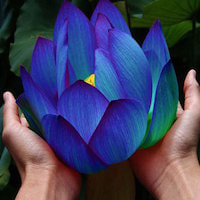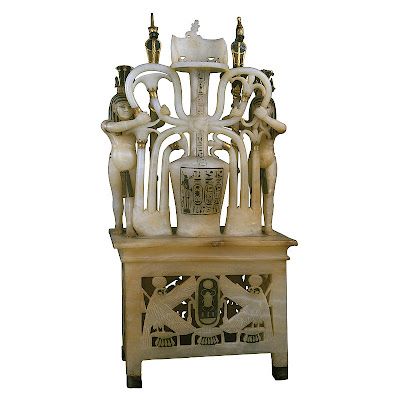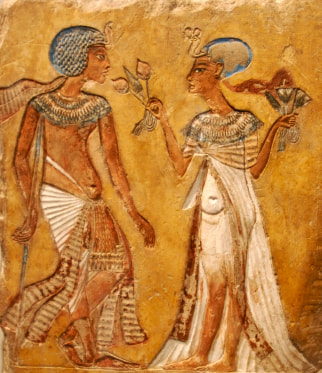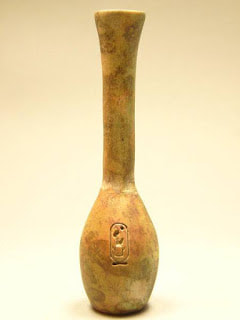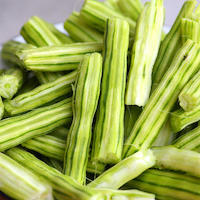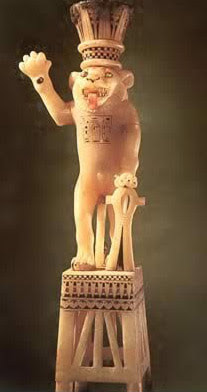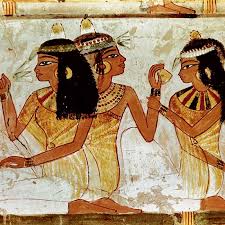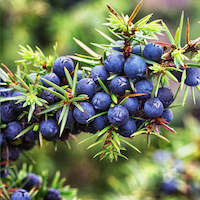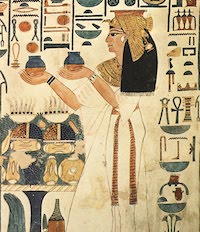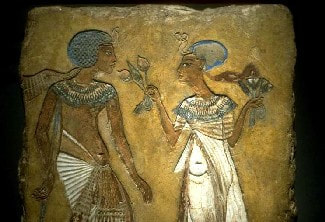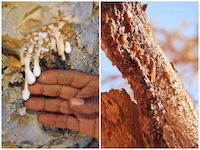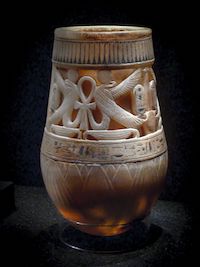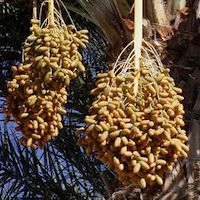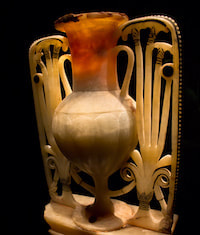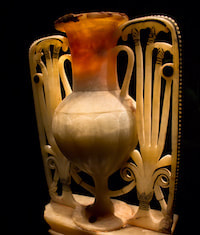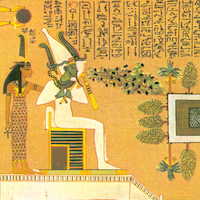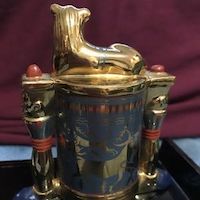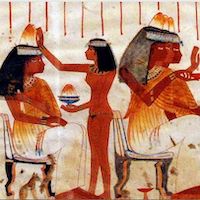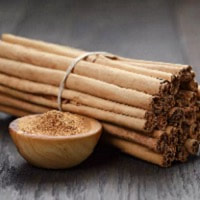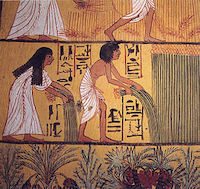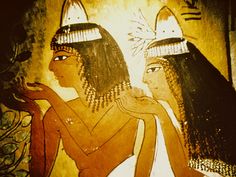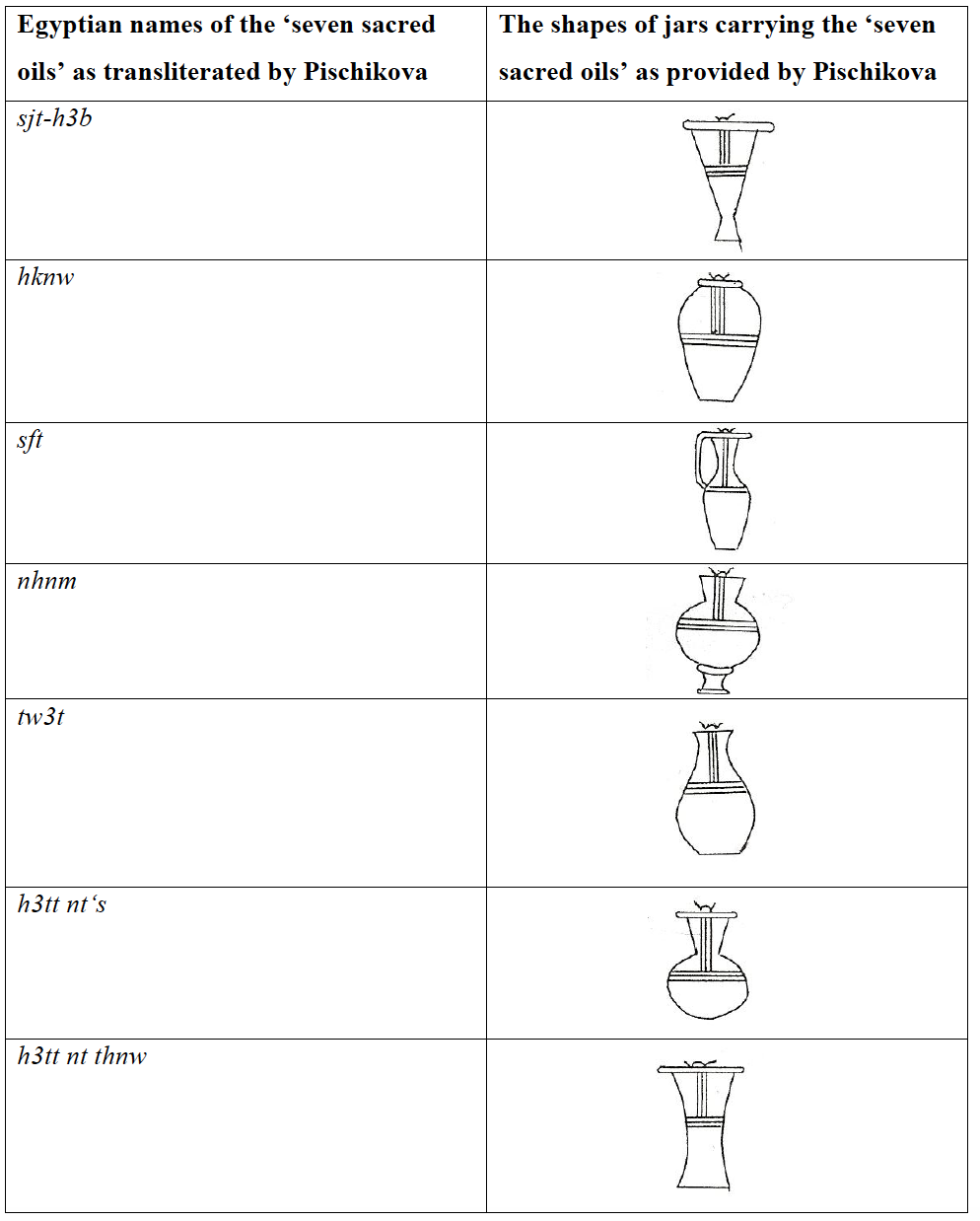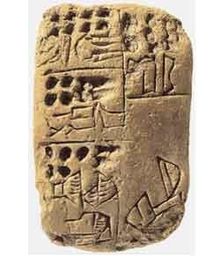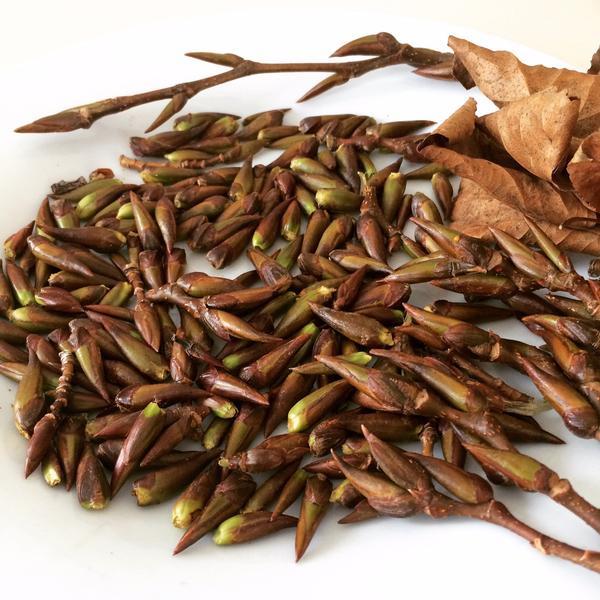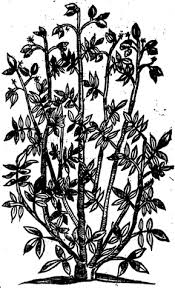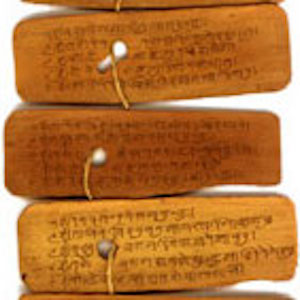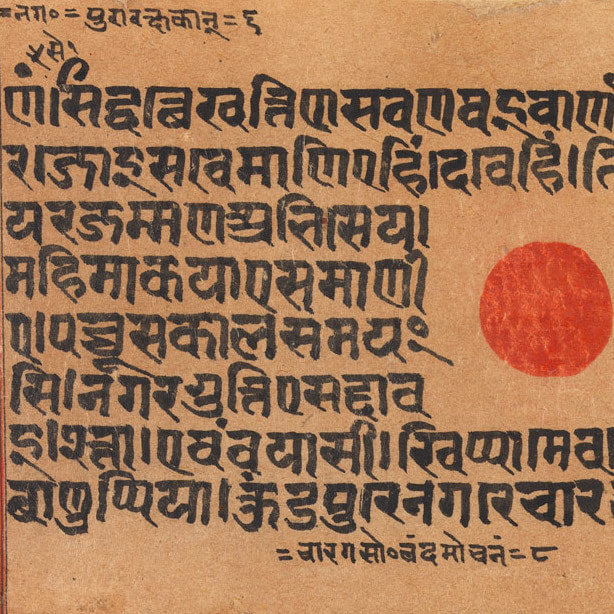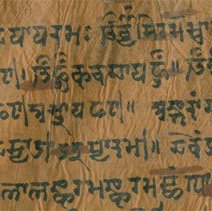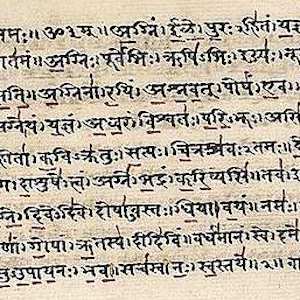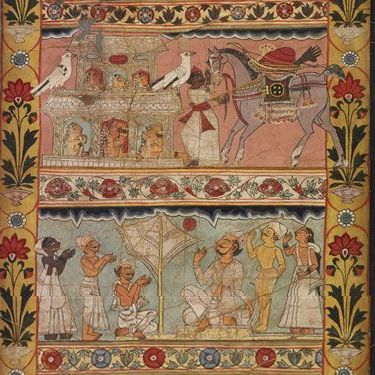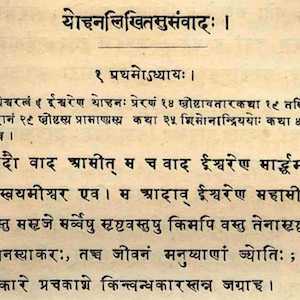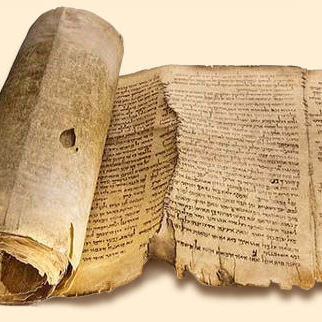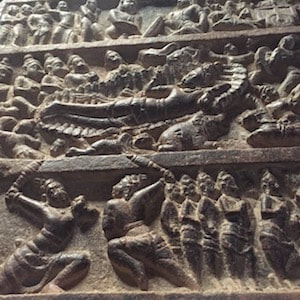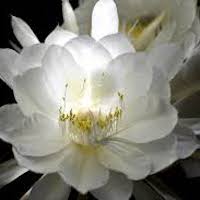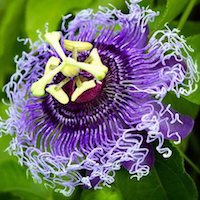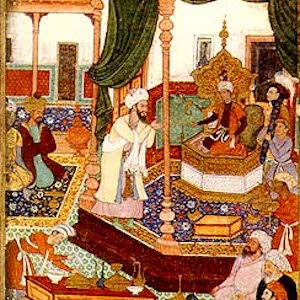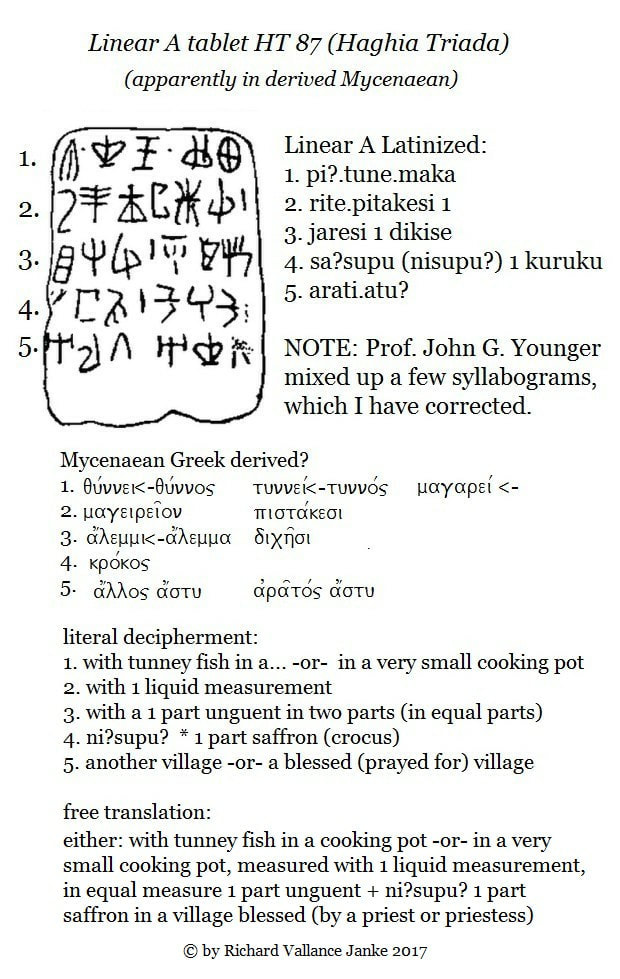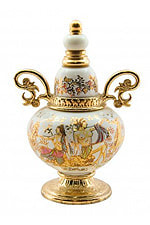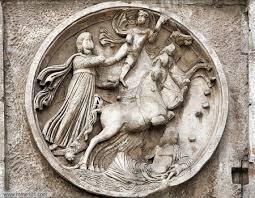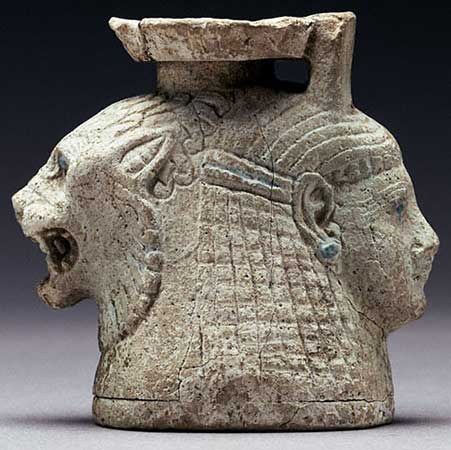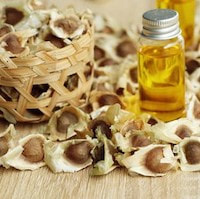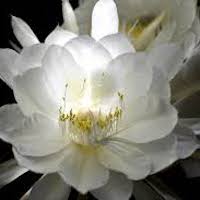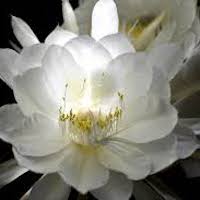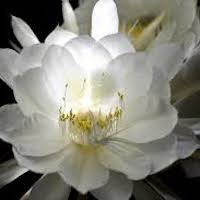Historically Significant Perfume Recipes
We stock variety of Ingredients. This page covers only the rare historical Recipes from Indian Brahat Samhita, to Egyptian, Japanese. Others are detailed separately. Click to know more about rare perfume ingredients, Ayurvedic essentials, Ancient perfume & essential oil recipes, therapeutic orchids, Singaporean Orchids and your perfume making oils at scentopia
Few ancient facts
4500 BC- The first writings about fragrant ingredients date back to China in 4500 BC, so it is possible the perfume history goes back farther.
4000BC - 43,000 Sq ft big ancient factory is found in today's Cyprus. This was used to extract oils in 4000BC. But we can’t be sure if it was medicinal usage or for fragrances.
3000 BC - A distillation vessel from 3000BC, found at Harappa, a key city in ancient Indus Valley Civilisation
2000 BC - First recorded chemist, “Ms Tapputi” from Mesopotamia lived in 2000 BC
1332 BC - King Tutankhamun was buried with jars of Frankincence and Blue Lotus over his grave
890 BC - Earliest written record, a book named “Perfume: combined ingredients” is from 890BC. Armenian kings presented King Tukulti Ninurta (Mesopotamia) this valuable gift.
Origin & evolution of perfume, didn't happen at a particular location. It didn't happen in a particular era. Perfumes evolved because of cumulative interest of humanity to entertain all their senses, particularly sense of smell and taste.
Below we have listed few perfume formulas, which we usually stock. These perfume formula are from Ancient Egypt, Ancient Persia, Ancient India, Ancient Greek, Ancient Rome & Ancient China. We have also included some perfume recipes from Medieval Europe, particularly Italy and France
4500 BC- The first writings about fragrant ingredients date back to China in 4500 BC, so it is possible the perfume history goes back farther.
4000BC - 43,000 Sq ft big ancient factory is found in today's Cyprus. This was used to extract oils in 4000BC. But we can’t be sure if it was medicinal usage or for fragrances.
3000 BC - A distillation vessel from 3000BC, found at Harappa, a key city in ancient Indus Valley Civilisation
2000 BC - First recorded chemist, “Ms Tapputi” from Mesopotamia lived in 2000 BC
1332 BC - King Tutankhamun was buried with jars of Frankincence and Blue Lotus over his grave
890 BC - Earliest written record, a book named “Perfume: combined ingredients” is from 890BC. Armenian kings presented King Tukulti Ninurta (Mesopotamia) this valuable gift.
Origin & evolution of perfume, didn't happen at a particular location. It didn't happen in a particular era. Perfumes evolved because of cumulative interest of humanity to entertain all their senses, particularly sense of smell and taste.
Below we have listed few perfume formulas, which we usually stock. These perfume formula are from Ancient Egypt, Ancient Persia, Ancient India, Ancient Greek, Ancient Rome & Ancient China. We have also included some perfume recipes from Medieval Europe, particularly Italy and France
Ancient Egyptian Perfume Recipe
The Egyptians were well known to have used perfumes to mask the body odour. They even carried perfume head-cones, which was a big fashion statement at that time. After taking control of Egypt, when Julis Caesar went back to Rome, he threw precious perfume to the crowd during his triumphant procession. The god of perfume, Nefertum, was also a god of healing. He could be described as the world's first aromatherapist!
|
Seshen - Essence of Blue Lotus
According to the Egyptian Hieroglyphs the coveted fragrance of Cleopatra was the sweet & intoxicating smell of blue lotus. It is often referred to as “cannabis of Ancient Egypt.” The recipe is supposed to be combination of Frankincense, Blue lotus absolute, Cinnamon Blue lotus was sacred to the Pharaohs because it was hallucinogenic. In reality, the blue lotus may provides a mild sense of tranquillity and euphoria. But it needs to be combined with Wine, just like the ancient Egyptians did, to get it's intoxicating effects. The wonderful fragrance of the sacred blue lotus flower was to the ancient Egyptians the perfume of the sweat of the god Ra, the divine essence. |
|
Kyphi - Cleopatra's perfume
According to the ancient texts, Kyphi was made from myrrh, sweet rush, cypress grass, wine, honey, raisins, resin and juniper pounded together. It is the most famous scented preparation from ancient Egypt and the best documented one. Its primary purpose was to be used as incense, a fumigant, burnt in great quantities by priests in Egyptian temples. The name kyphi is the Latin version of the Greek transcription of the Egyptian word kapet, originally meaning any substance to be burnt. It was used for aromatic and medicinal purposes. It was offered to gods as incense and for human consumption, it was diluted in oil. We found 3 recipe as below: Rufus of Ephesus’ kyphi (via Damacrates, via Galen) first century AD - raisins with skin and pips removed 90 g ; wine ‘a little’ ; honey ‘sufficient’ ; ‘burnt resin’ 90 g ; ‘nails’ of bdellium 45 g ; camel grass 45 g ; sweet flag 33 g ; pure cyperus grass 11 g ; saffron 4 g; spikenard 11 g ; aspalathos 2 ‘semis’ ; cinnamon or cardamon ; 15 g ; good cassia 11 g Dioscorides’ kyphi first century AD - ‘sun’ raisins 5.448 kg ; old wine 4.828 litres ; honey 1.136 litres ; myrrh 42 g ; pure resin 2.270kg ; plump juniper berries ; 0.284 litres ; sweet flag 0.454 litres ; camel grass 0.454litres ; aspalathos 0.454 litres ; cyperus grass 0.284 litres Manetho’s kyphi (via Plutarch) third century BC - raisins ; honey ; wine ; myrrh ; resin ; mastic ; bitumen of Judea ; cyperus grass ; aspalathos ; seseli ; rush ; lanathos ; large and small juniper berries (arkeuthos) ; sweet flag ; cardamom Kyphi Edfu 1 - raisins from the oases 3.3 litres ; wine 2.5 litres ; ‘fresh Horus eye’ i.e oasis wine 2.5 litres ; ‘sweet Horus eye’ i.e honey 3.3 litres ; frankincense (sntr) 1,213 g ; myrrh (kar) 1,155 g ; mastic 273 g ; pine resin 273 g ; sweet flag 273 g ; aspalathos 273 g ; camel grass 273 g ; mint 273 g ; cyperus 1.5 litres ; juniper 1.5 litres ; pine kernels 1.5 litres ; peker 1.5 litres ; cinnamon 273 g |
|
Hatshepsut's Perfume
Hatshepsut was the granddaughter of powerful pharaohs. She became the pharaoh after her husband died and ruled for 22 years. Under her rule, Egypt enjoyed a peaceful & prosperous time. Yet after her death, the "female pharaoh" was scorned, her images & inscriptions mutilated and her monuments demolished. She loved perfumes and sent expedition to secure aromatic herbs from around the region. One such vial was found at near her mummy. Bonn University studied the traced and has tried to recreate the scent. We do not know the recipe, but as the researches state "It probably had Frankincense- smells of the gods". It could have other things as well. Egyptians at the time also had a ready supply of other oils like safflower oil, linseed oil, ben oil (Moringa peregrina), balanos oil (Balanites aegyptiaca), olive oil, almond oil, and sesame oil. |
|
Moringa
Moringa Pterygosperma is indigenous to Egypt and is still grown there today. Moringa oleifera is however the most widely cultivated species in the genus Moringa. Its also called Moringa, Drumstick tree, Ben oil tree or benzoil tree. It is fast-growing, drought-resistant tree, native to tropical and subtropical regions of South Asia. The leaves, bark, flowers, fruit, seeds, and root are used to make medicine. This superfood is used for anemia; arthritis and other joint pain (rheumatism); asthma; cancer; constipation; diabetes; diarrhea; epilepsy; stomach pain; stomach and intestinal ulcers; intestinal spasms; headache; heart problems; high blood pressure; kidney stones; fluid retention; thyroid disorders; and bacterial, fungal, viral, and parasitic infections. Pliny (NH XII 100-102) refers to this plant as myrobalanum, which he says is grown for scent, perfumers extracting the oil (behen-oil) from only the shells of the fruit, a nut, whereas medical men also pound the kernels, gradually pouring water over them while doing so. |
|
Susinum
It is believed to be composed of the sacred blue lotus (blue water lily) combined with Rose, Myrrh, Saffron, Cardamom and Cinnamon. It has an exotic, floral smell that elevates the spirits & is claimed to have aphrodisiac qualities. Susinum is truly fit for an Egyptian Queen. Dioscorides’ susinon- lilies 1,000 (x2) ; balanos oil 4,226 kg ; sweet flag 2,354 kg ; myrrh 140 g ; fragrant wine ; cardamom 1,530 kg ; cardamom 37 g (x3) ; best myrrh 270 g (x3) ;crocus 37 g (x 3) ; cinnamon 281 g (x3) ; honey ; salt Pliny’s susinum- lilies ; oil of behen nut (balanos oil) ; sweet flag ; myrrh ; saffron ; (crocus) ; cinnamon ; honey |
|
Metopion
Metopion was the Ancient Egyptian name for the plant from which Galbanum is derived. It was also the name of a highly prized perfume in which Galbanum was one of the main ingredients. This perfume has powerful medicinal and restorative properties. It was thought to calm the mind and relax the muscles. Most sources agree that galbanum, cardamom and myrrh were the main ingredients. Dioscorides’ metopion- bitter almonds; omphacium (green olive oil); cardamom; Schoenus (camel grass); Calamus (sweet flag); honey; wine; myrrh; balsamum seed; galbanum; resin. Pliny’s metopium- oil of bitter almonds; omphacium (green olive oil ); cardamom; rush (camel grass) flag (sweet flag); honey; wine; myrrh; terebinth resin (turpentine resin); galbanum; seed of balsam (balsamum seed) |
|
Juniper Berries
Two Greek kyphi recipes, one being that of Dioscorides, mention two words in the list of ingredients, arkeuthos and brathy, which have been translated as juniper, seemingly referring to large and small berries respectively of this plant. The hieroglyphic recipes for kyphi mention wan-seeds and reliefs dating from the Old Kingdom depict the harvesting of what the texts describe as w’n-berries. Actual berries were found in the tomb of Tutankhamun, those of Juniperus oxycedus and Juniperus excela. Berries from Juniperus phoenicia were found on Egyptian sites of all dates. The ancient Egyptians also used juniper berries for medicinal purposes. |
|
Tisheps
The perfume /incense ‘laboratory’ in the temple of Horus at Edfu has a recipe on its walls, carved in hieroglyphics, for the preparation of ‘tisheps made of ab resin’. Tisheps unguent took 241 days to make, 1 day to prepare the base material and 240 for the preparation to be left undisturbed. Many today's perfumer compare this to a locally found Cinnamon. |
|
Min Unguent
'Secret Min Unguent', dedicated to the worship of the God Min-Amun. It was supposed to be a secret and told only by word of mouth. Its recipe called for sweet flag, pine kernels, juniper and other herbs. This recipe was unique in that it also called for the addition of minerals such as lapis, carnelian, red jasper, turquoise, gold and silver. It was a colourful, exotic and expensive preparation. We found the following to be the recipe: Take 0.5 l of prepared tisheps pulp from the nedjem tree. Mix with 910 g memen. Grind together, pass through a sieve and stir during the night until dawn. Place in a pot on a slow fire and stir until it sets. Leave for 2 days. Place on the fire as the first time. Add 0.5 l incense concentrate. Boil together and leave for 2 days. Place on the fire as the first time to boil it. Add sweet scented aromatic substances [as indicated below- The picture was never deciphered] and pass through a cloth. Add to this 182 g ‘dry antiu’, 18 g aspalathos, 18 g sweet geget wood; 18 g sweet flag, 18 g pine kernels, 18 g juniper berries, 1 l sefy bitumen. Leave for two days. Place on fire like the first time and boil. Leave for 2 days. Place on fire like the first time. Leave to boil while stirring with a spoon made with Christ-thorn wood. Leave for 2 days. Place on fire like the first time to boil add when cool, add 18 g of each of all minerals, namely gold, silver, genuine lapis lazuli, genuine red jasper, genuine green feldspar, genuine turquoise, genuine faience and genuine carnelian. Place on fire as the first time. Test the concoction with a wooden stick. If it is too weak, bind it together with dry antiu. If you find that it is too strong, dilute it with tisheps of the nedjem tree and reduce it by placing in on a fire of sycamore wood. |
|
Desert Date (Balanites aegyptiaca) (Egyptian Balsam)
It is spiny shrub or tree up to l0 m tall, widely distributed in dry land areas of Africa and South Asia. Balanos oil was used by the ancient Egyptians as a base for perfume. In addition, the classical authors Dioscorides and Pliny list balanos oil as ingredients in Mendesium perfume. isd tree, mentioned in Egyptian texts, could possibly be this tree. The fruit has often been found through excavation in Egypt, the earliest known specimens being found in the Djoser pyramid complex at Saqqara. It is traditionally used in treatment of various ailments i.e. jaundice, intestinal worm infection, wounds, malaria, syphilis, epilepsy, dysentery, constipation, diarrhea, hemorrhoid, stomach aches, asthma, and fever. It contains protein, lipid, carbohydrate, alkaloid, saponin, flavonoid, and organic acid. |
|
The Egyptian
‘The Egyptian’ was highly prized by women because it was one of the long-lasting perfumes that did not easily evaporate, due to its strength and substantial character (Theophrastus CO X, 42), as evidenced by a perfumer reporting in antiquity that ‘The Egyptian’ had lasted for eight years in his shop (Theophrastus CO IX, 38). Theophrastus (CO VI, 28) states that ‘The Egyptian’ was made from several ingredients, which included cinnamon and myrrh steeped in fragrant wine, to remove the heavy quality of this perfume with its strong odour and to make it sweeter (Theophrastus CO X, 44). Theophrastus (CO VI, 30) adds that ‘The Egyptian’ (like Megaleion) is one of the most troublesome perfumes to make, because it involves a mixture of many expensive ingredients. Manniche (1999:64-65) states it is not clear whether ‘The Egyptian’ was always made in Egypt itself, or in other places as well. She argues that it is possible that it was manufactured on licence in Greece, due to the fact that Theophrastus was so well informed about it. |
|
Mendesium or Mendesian (Egyptian)
Two important and historically significant authors Pedanius Dioscorides and Pliny the Elder have described this perfume. Pedanius Dioscorides mentions the ingredients are - Behen oil (from the Moringa oleifera ), myrrh along with wild cinnamon and resin . Pliny the Elder states that the composition was behen oil, myrrh and resin. Another important authority, the Greek physician Paul Aegineta wrote about Mendesium. He states that this is made from oil from acorns, myrrh, cassia , turpentine and cinnamon. Furthermore, cardamom and galbanumas are also sometimes added. Mendesium was used as a perfume and for the treatment of sore muscles. This is the Egyptian version. The actual ‘Mendesian’ was named after the Egyptian Delta city of Mendes, was one of the most famous Egyptian perfume. |
|
Irinum (Latin)/ Irinon (Greek)/ iris perfume
Theophrastus (CO V.24) states that a superior kind of iris perfume is made by using the root of the iris dry. According to him, better results are obtained in this way, than by steeping the roots in liquid or by subjecting them to fire. Dioscorides (OMM I, 1) states that Egyptians knew the root of the iris as a perfume. His two recipes are below: Dioscorides’ Irinon - 1st recipe - palm tops 2.948 kg ; water ¼ L; honey to smear the basin with; bruised iris roots 6.356 kg ; oil 6.356 kg Dioscorides’ Irinon - 2nd recipe - wood balsum 2.326 kg ; oil 31.92 kg ; sweet flag 4.366 kg ; myrrh previously macerated in old fragrant wine – just a little ; bruised iris roots |
|
Myrtinum (Latin)/ Mursinelaion (Greek)/ myrtle perfume
Dioscorides 85 (OMM I, 48) and Pliny (NH XIII, 9) provide the ingredients for their versions of this perfume. Pliny (NH XIII, 10-11) states that cheaper kinds of oil are made out of a compound of myrtle and laurel, to which marjoram, lilies, fenugreek, myrrh, cassia, nard, rush, and cinnamon are added. Dioscorides Mursinelaion- omphacium (green olive oil); water; black myrtle leaves; pomegranate; cypress; camel grass Pliny’s Myrtinum - myrtle-oil ; pomegranate rind ; cypress ; cyprus ; reed (sweet flag) ; mastic-oil |
|
Cyprinum (Latin)/Kypros or Kuprinon (Greek)/ henna perfume
Pliny (NH XII, 109) states that the best quality cyprinum is made from the henna tree (Lawsonia inermis), grown at Canopus on the banks of the Nile, the second best at Ascalon in Judea, and the third best on the island of Cyprus. Theophrastus (CO V, 25-26) states that kypros is made from the flowers of the henna plant (not the seeds as argued by Pliny). Their recipes are below: Pliny’s cyprinum - henna (called ‘cyprus’ here); onphacium (green olive oil); aspalathos ; sweet flag ; myrrh (sometimes added) ; cardamom ; southernwood; all-heal (sometimes added) Theophrastus’ kypros - henna ; onphacium (green olive oil) ; aspalathos ; cardamom Dioscorides’ kuprinon - henna 21.108 kg ; onphacium 12.712 kg ; (green olive oil) ; rain water ; aspalathos 2.497 kg sweet flag 2.951 kg ; myrrh 454 g ; cardamom 1.614 kg ; old fragrant wine ; cinnamon (sometimes added) |
|
Cinnamominum
The ingredients given by Dioscorides (OMM I, 74) and Pliny (NH XIII, 15) for Cinnamominum: Dioscorides’s cinnamominum - balanos oil ; cinnamon ; carpobalsamum ; myrrh ; xylobalsanum (wood balsam) ; sweet flag ; camel grass ; honey Pliny‘s cinnamominum - balanos oil ; cinnamon ; balsam seeds ; myrrh ; wood balsam ; sweet flag ; camel grass seeds ; fragrant honey |
|
Sampsuchinum/ amarakinum/ marjoram perfume
Ingredients given by Dioscorides (OMM I, 58 and OMM I, 68) and Pliny (NH XIII, 10 and 14) for amarakinum and sampsuchinum. Dioscorides amarakinum - amarakon ; oil of green olives or balanos ; wood balsam (xylobalsamum) ; camel grass ; sweet flag ; amarakon ; costus ; amomum ; nard ; cinnamon (sometimes added) ; carpobalsamum ; myrrh ; honey ; wine ; nard Dioscorides sampsuchinum - myrtle leaves ; green olive oil ; sampsuchum ; cassia ; thyme ; southernwood ; bergamot mint flowers Pliny’s amarakinum - amarcus ; green olive oil ; chaste tree leaves ; all-heal ; honey ‘foreign substances’ ; salt Pliny’s sampsuchinum - sampsuchum ; green olive oil ; sweet flag |
|
Amarakinon/ sampsuchinon - Solid Perfume usually worn as a head cone
Marjoram, apart from being found in perfumed oils named amarakinon and sampsuchinon, is also found in solid perfumes (unguents) under the same two names. Dioscorides’s amarakinon - fat (ox) 908 g ; wine 1.5 litres ; jujube seeds 1.816 kg ; bruised aspalathos 454 g ; marjoram flowers 1.816 kg ; myrrh (may be added) 28 g Dioscorides’s sampsuchinon - bruised marjoram 681 g (x2) ; fat (ox) 454 g ; wine |
Ancient Persia / Mesopotamia / Israel / Jordon Perfume Recipes
|
Tapputi Belatekallim's Recipe
Tapputi Belatekallim from Babylon is considered to be the world’s first chemist & “nose”. She wan known to create perfumes for the king. Her existence is recorded on a cuneiform tablet dated about 1200 BC. One of her recipes survives and includes a preparation of flowers, oil and calamus along with cypress, myrrh and balsam. She added a solvent and distilled and filtered the perfume several times. |
|
Mecca Myrrh or Balm of Mecca - Commiphora gileadensis or commonly today know as opobalsamum
Commiphora gileadensis plant was cultivated in ancient times in Ein Gedi and Jericho. The plant was renowned for the expensive perfume, as well as for exceptional medicinal properties that were attributed to its sap, wood, bark, and seeds. |
|
Balm of Gilead
Some botanical scholars have concluded that the actual source was a terebinth tree in the genus Pistacia. It is another balsam which is often used to smoke the cloths. Its has an unbelievable aroma. De Materia Medica attributes unbeatable medical properties to balsam, such as expelling menstrual flow; being an abortifacient; moving the urine; assisting breathing and conception; being an antidote for aconite and snakebite; treating pleurisy, pneumonia, cough, sciatica, epilepsy, vertigo, asthma, and gripes. |
Ancient India Perfume Recipes
Hindu literature has lot of references to perfumes from Sandal paste, flowers, agar wood, musk, civet, Vetiver etc. Kamasutra of Vatsyayana lists making perfumes as one of the 64 arts. Varahamihira devoted chapter 30 only to “Gandhayukti”, which means “Art of combining perfumes”. Some of these recipes are below. To experience them in person, please visit our perfumery. It can be read in detail here- http://yousigma.com/biographies/Brihat%20Samhita%20(Acharya%20Varahmihir).pdf
|
Brihat Samhita: Formula
A scent called Smaroddeepana (‘kindler of passion’) is prepared from equal quantities of Patra (Laura cassia), juice of Turuska (Tagates erecta), Vaala (Aporosa Lindleyana) and Tagara (Valeriana Wallichii). The same combined with Vyamaka and fumigated with Katuka (asafetida) yields a perfume called ‘Bakula scent’. The same with costus is termed ‘lotus scent’, and with Chandana (Sandalwood), Champaca scent. With nutmeg, cassia bark and coriander, it goes by the name of ‘Jasmine scent’.” |
|
Brihat Samhita: Formula
Take equal quantities of woody cassia, Useera (Vetiveria Zizanioides) and Patra (Laura cassia) and a half of the above of small cardamoms and pound them together into fine powder; which should be mixed (reinforced) with musk and camphor. This will make an excellent toilet powder (perfume for clothes).” |
|
Brihat Samhita: Formula
Scent of Champaca flower is made by mixing together equal quantities of Manjishta (Rubia cordifolia), Vyagranakha (a tree or cuttlefish bone), Nakha (shell perfume), woody cassia, costus and Bola (commiphora myrrha) which being mixed with gingelly (sesame) oil should be heated in the sun’s rays.” |
|
Brihat Samhita: Formula
A scented water fit for the washing of kings’ head is prepared with equal quantities of woody cassia, costus (Saussura lappa), Renuka (Piper aurantiacum), Nalika (Hisbiscus cannabius), Rasa or Bola (Commiphora myrrha), Tagara (valeriana wallichi), Valaka (Aporosa lindyana), Nagakesara (Meusa ferrea) and Patra (laurus cassia). |
|
Brihat Samhita: Most common perfume-making ingredients in Ancient India
Sandal ( Santalum album), Jatiphala (Myristica fragrans), Coriander ( Coriander sativum), Satapushpa (Pimpinella anisum), Kunduruka (Boswellia serrata), Priyangu ( Aglaiya roxburghiana), Musta bulbs (Cyperus rotunda), Jatamamsi (Nardostachys jatamansi), Haritaki (Terminalia chebula), Ghana (Cyperus plant) and the plants mentioned already. |
|
Kalpa Sutra of BHADRABAHU: Perfume recipe mention-1
Flowers of 5 different colors, the linest aloe-wood, and License, and ignited ambergris. Sprinkled with saffron, and Bcented with sandal-wood. |
|
Mahabharata: 3 Perfume recipes
1- Dhupa (fumes) by burning Niryasa (aromatic resin exudation from trees) like Guggulu (Commiphora mukul, Shallaki (Boswellia serrata Roxb.) etc. is considered as dearer to Gods and Godesses. 2. Dhupa by burning of leaves of trees like Sara (Pinus roxberghi Sarg), Agaru (Aquilaria agallocha Roxb), Shallaki (Boswellia serrata Roxb) etc. is dearer to Yakshas and Rakshasas. 3. Kritrima (artificial) Dhupa produced from fermented substances like Molasses etc. is dearer to Daanavas, (demons) Bhutas (ethereal beings) and men. |
|
Brahma kamal - Rare, Legendary & Mythological plant of India
Brahma Kamal, named after Brahma, the God of Creation, probably blooms only for one night in the entire year, somewhere between July and September. They have large pure white star-like flowers with lovely fragrance to help their pollinators locate the blossoms by moon or star light. The flower starts blooming after sunset from 7 p m onwards and takes about two hours to full bloom,about 8 inches in diameter and remain open through out night. |
|
Krishna kamal (Passion Flower) - Rare, Legendary & Mythological plant of India
Krishna Kamal flower is complex, about 10 cm diameter, with the five sepals and petals similar in appearance, whitish in colour, surmounted by a corona of blue or violet filaments, then five greenish-yellow stamens and three purple stigmas. It is believed with reference of Hindu epic ‘Mahabharata’ that : There are about 100 of blue petals - one for each of the Kauravas.; 5 of the yellow ones in the centre - one for each of the Pandavas.; The green bulb in the centre symbolises Draupadi, the queen of Pandava,; The three filaments are for the holy trinity of Brahma-Vishnu-Shiv and,; The radial in the centre is the Sudarshan chakra of Lord Krishna. |
|
Vishnu Dharmottara Purana - 450-650 A.D - Gandhataila
Til Beej (Sesame seeds) – Sesamum Indicum; Cow’s Milk, Mulethi (Yashtimadhu), Licorice – Glycyrrhiza Glabra, Valak (Iruvale) – Coleus Vettiveroides, Vetiver (Ushira or Khas) – Vetiveria Zizanioides, Manjistha – Rubia Cordifolia, Mishi – Indian Dill – Anethum Sowa, Mustak (Nut Grass) – Cyperus Rotundus, Kushta (Indian Costus Root) – Saussurea Lappa, Bala – Sida Cordifolia, Atibala – Abutilon Indicum, Mahabala, Agaru (Agarwood) – Aquilaria Agallocha, Kesar (Saffron) – Crocus Sativus Safed Chandan (White Sandalwood) – Santalum Album, Sariva – Hemidesmus Indicus, Sarala (Chir Pine) – Pinus Roxburghii, Raal (Sarja Rasa) – Vateria Indica Resin, Devdaru (Deodar Cedar or Himalayan Cedar) – Cedrus Deodara Padmakadi Gana, Eladi Gana, Shaileyam – Parmelia Perlata, Rasna – Pluchea Lanceolata, Shalaparni – Desmodium Gangeticum, Lodhra – Symplocos Racemosa, Kasheruk – Scirpus Grossus, Tejpata (Indian Bay Leaf) – Cinnamomum Tamala Durva (Bermuda grass) – Cynodon Dactylon. |
|
Ain-e-Akbari -16th century A.D - lists detailed perfume names with prices. We are working to find their recipes
'Ambar i ashhab, lto3 Muhurs, per tdlah. Zab6d (dvet), J i2. to 1 if., do. Musk, lto4j It,, do. Ug^um aloes, Hind. Agar, 2 i?. to 1 M., per sSr. Chuwah (Distilled wood of Aloes), ^R.Xol R.,per tdlah. Gaurah," 3to5 R., do. Bhimsini Camphor, 3 i^. to 2 M., do. Mid, 1 to 3 i?., do. Za'farlm, \2\o22 R,, per sir. Za'faHLn i Kamandf, 1 to 3 if., do. Za'£ar&n (from Kashmir), 8 to 12 i?., do. Sandalwood, 32 to 55 i2., per man, N^ifidi i mushk, 3 to 12 if., ^^ «^. Kalanbak (Calembic,) 10 to 40 ^., p&r man. Sil&ras, 3to6 R,, per «er, 'Ambar i Lfidan, 1 J to 4 i^., do. Kifur i Chfnah, 1 to 2 i?., do. 'Araq i Fitnah, lto3 R,, per hottle. 'Araq i Bed i Mushk, 1 to 4 ^., do. Bosewater, i to 1 -ft., do. 'Araq i Bah&r, 1 to 5 i?., do. *Araq i Chambelf, i to i -R., do. Yiolet-root, J to 1 -fi., jwr «^. Azfiur uftib, 1 J to 2 i?., do. Barg i M4j (brought from Gujr&t), i to 1 ^., do. Bogandh GugalA, 10 to 13 -R., do. |
Ancient Greek Perfume Recipes
The goddess of love, beauty, and desire, Aphrodite was also mistress of the seductive arts, perfume. Theophrastus book On Odours give us even more insight into their ancient recipes and rituals. Some of them are here.
|
Linear A tablet HT 87- In Mycenaean
This translation is under dispute. Most researchers agree that it is probably an archaic proto-Greek word, which may mean something along the lines of “perfumed”, resulting in a translation “perfumed unguent”, of which 1 part is saffron. It's probably an ancient scent recipe. |
|
Megaleion
This was created by Megallus and was supposed to be one of the most troublesome perfumes to make. It was used by both Egyptians and Greeks. It contained a large amount of myrrh mixed with cinnamon and Casica. Megaleion was also used to reduce inflammation of the skin and to heal wounds. The Egyptians applied perfume in a solid cone of cream on the head that would slowly melt down to the body, the Greeks applied their perfumed creams to their feet and breasts. They had a theory that perfume on the feet would envelop the whole body and gradually ascend to the nose and that the breasts were the seat of the heart. |
|
Mendesium or Mendesian (Greek)
Two important and historically significant authors Pedanius Dioscorides and Pliny the Elder have described this perfume. Pedanius Dioscorides mentions the ingredients are - Behen oil (from the Moringa oleifera ), myrrh along with wild cinnamon and resin . Pliny the Elder states that the composition was behen oil, myrrh and resin. Another important authority, the Greek physician Paul Aegineta wrote about Mendesium. He states that this is made from oil from acorns, myrrh, cassia , turpentine and cinnamon. Furthermore, cardamom and galbanumas are also sometimes added. Mendesium was used as a perfume and for the treatment of sore muscles. This is the Greek version. The actual ‘Mendesian’ was named after the Egyptian Delta city of Mendes, was one of the most famous Egyptian perfume. This was probably licenced to Greek perfumeries. |
|
Stakte
Stacte (Greek: στακτή, staktē) and nataph (Hebrew: נָטָף, nataf) are names used for one component of the Solomon's Temple incense, the Ketoret, discussed in Exodus. Some think the gum called storax was intended, but it is generally understood to be the purest king of myrrh. So Pliny, speaking of the trees whence myrrh is produced, says, "Before any incision is made, they exude of their own accord what is called Stacte, to which no kind of myrrh is preferable." Stakte (Stacte) perfume today is created by steeping bruised Myrrh in oil with Benzoin to enhance the aroma of the Myrrh and create a rich, warm and sweet aroma. |
|
Megalium (Latin)/ Megaleion (Greek)
Manniche (1999:76 and 148) states that the origin of this perfume and of its name is unknown. She adds that there is nothing specifically linking this perfume to Egypt. The ingredients are, however, among those favoured by the Egyptians in their scented preparations. Theophrastus’s megaleion - balanos oil ; burnt resin ; cassia ; cinnamon ; myrrh Pliny ’s megaleion- behen nut oil (balanos oil) ; resin ; balsam ; reed (sweet flag) ; rush (camel grass) ; wood balsam ; cassia Dioscoride’s megaleion - balanos oil ; resin ; cinnamon ; sweet flag ; camel grass ; wood balsam ; costos ; carpobalsamum ; myrrh ; nard ; amomum |
Ancient Cyprus Perfume Recipes
Ancient Rome Perfume Recipe
Pliny the Elder (Roman, A.D. 23–79) in his Natural History observed:
"The smell of some plants is sweeter at a distance, becoming fainter as the distance is lessened; for instance, that of the violet. A freshly gathered rose smells at a distance, but a faded rose when nearer.
All perfume however is stronger in spring, and in the morning; as the day draws near to noon it grows weaker. Young plants also have less perfume than old ones; the strongest perfume however of all plants is given out in middle age. The rose and the saffron have a stronger perfume when they are gathered in fine weather, as have all flowers in warm climates than those in cold. In Egypt however the flowers have very little perfume, the atmosphere being misty and full of dew owing to the wide expanse of river."
"Headache is caused by sweet marjoram spikenard and megaleion among costly perfumes: most of the cheap ones have also this effect, notably that one made from bay. The lightest are rose-perfume and kypros, which seem to be the best suited to men, as also is lily-perfume."
He was a using scientific methods to access and understand the perfumes and their sources.
"The smell of some plants is sweeter at a distance, becoming fainter as the distance is lessened; for instance, that of the violet. A freshly gathered rose smells at a distance, but a faded rose when nearer.
All perfume however is stronger in spring, and in the morning; as the day draws near to noon it grows weaker. Young plants also have less perfume than old ones; the strongest perfume however of all plants is given out in middle age. The rose and the saffron have a stronger perfume when they are gathered in fine weather, as have all flowers in warm climates than those in cold. In Egypt however the flowers have very little perfume, the atmosphere being misty and full of dew owing to the wide expanse of river."
"Headache is caused by sweet marjoram spikenard and megaleion among costly perfumes: most of the cheap ones have also this effect, notably that one made from bay. The lightest are rose-perfume and kypros, which seem to be the best suited to men, as also is lily-perfume."
He was a using scientific methods to access and understand the perfumes and their sources.
This page in Under Construction. More Info coming soon
Join Scentopia's wonderful orchid scent crafting, fragrance tour, bridal shower or corporate team building which includes perfume making onsite and offsite, beach activities and more. We also serve primary school learning journey, secondary students and pupil on industrial excursions. Know more about our orchids perfume bar or therapeutic orchid scents and other wellness aromas. Conatct Perfume workshop or book a scent crafting session here.
